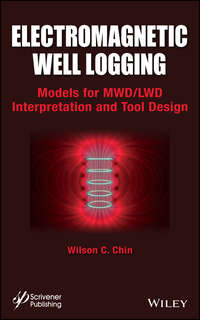
Полная версия
Wave Propagation in Drilling, Well Logging and Reservoir Applications
Wave propagation is central to all areas of petroleum engineering, e.g., drilling vibrations, MWD mud pulse telemetry, swab-surge, geophysical ray tracing, ocean and current interactions, electromagnetic wave and sonic applications in the borehole, but rarely treated rigorously or described in truly scientific terms, even for a single discipline. Wilson Chin, an MIT and Caltech educated scientist who has consulted internationally, provides an integrated, comprehensive, yet readable exposition covering all of the cited topics, offering insights, algorithms and validated methods never before published. A must on every petroleum engineering bookshelf! In particular, the book: Delivers drillstring vibrations models coupling axial, torsional and lateral motions that predict rate-of-penetration, bit bounce and stick-slip as they depend on rock-bit interaction and bottomhole assembly properties, Explains why catastrophic lateral vibrations at the neutral point cannot be observed from the surface even in vertical wells, but providing a proven method to avoid them, Demonstrates why Fermat's «principle of least time» (used in geophysics) applies to non-dissipative media only, but using the «kinematic wave theory» developed at MIT, derives powerful methods applicable to general attenuative inhomogeneous media, Develops new approaches to mud acoustics and applying them to MWD telemetry modeling and strong transients in modern swab-surge applicagtions, Derives new algorithms for borehole geophysics interpretation, e.g., Rh and Rv in electromagnetic wave and permeability in Stoneley waveform analysis, and Outlines many more applications, e.g., wave loadings on offshore platforms, classical problems in wave propagation, and extensions to modern kinematic wave theory. These disciplines, important to all field-oriented activities, are not treated as finite element applications that are simply gridded, «number-crunched» and displayed, but as scientific disciplines deserving of clear explanation. General results are carefully motivated, derived and applied to real-world problems, with results demonstrating the importance and predictive capabilities of the new methods.







